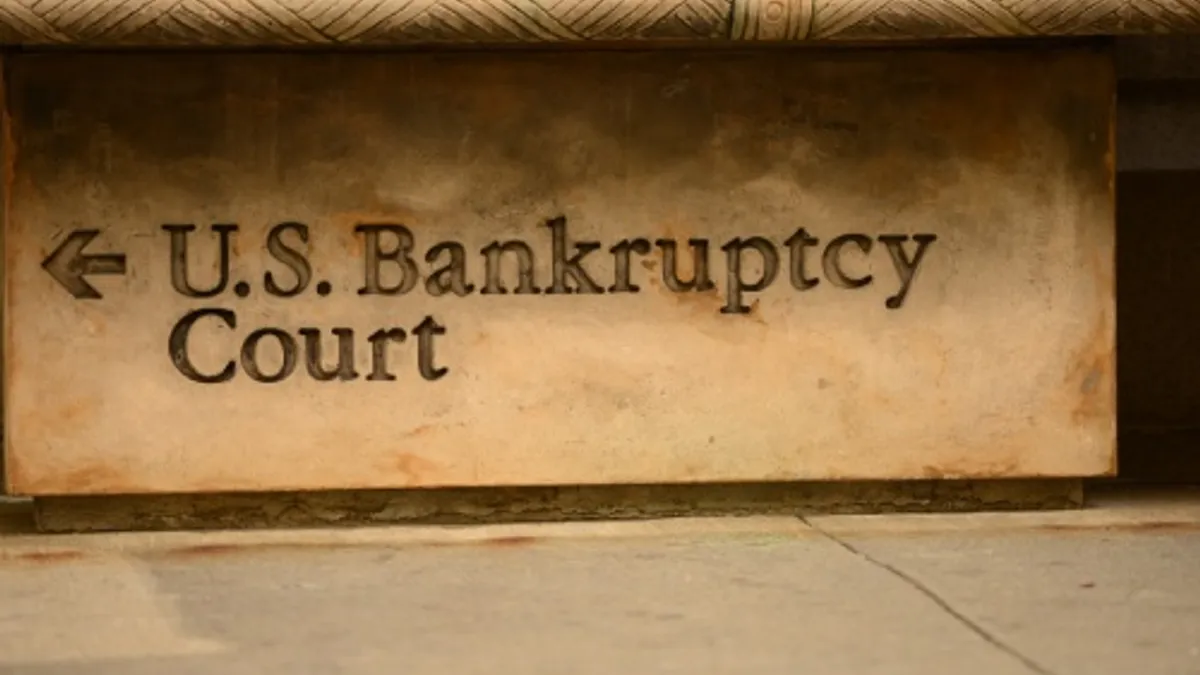This is the third article in a three-part series on the broader issues at play as higher ed debates proposed new rules governing topics such as online learning and new education models. Read our first and second installments.
Nearly 25 years ago, 18 governors gathered in Park City, Utah, and found common ground in the problems that plagued colleges in their home states. Their complaints are familiar, even today: There was too much regulation, too many hang-ups with accreditation and too much resistance to meaningfully improve higher education.
So, they decided, they would build their own university from the bottom-up.
Two ideas emerged during that 1995 meeting that formed the backbone of the hypothetical university, according to an account by Kevin Kinser, now head of the education policy studies department at Penn State University.
One was using the newfound capabilities of the internet to reach students across state lines. That would be critical to address growing enrollment in the nation's western states.
The second was a more radical suggestion: awarding credentials based on whether students could prove they mastered a skill, instead of how much time they spent in the classroom. Colorado's governor, Roy Romer, suggested the governors create a university to pilot the idea.
The idea, competency-based education (CBE), traces its origins back hundreds of years with the use of outcomes-based learning in fields requiring technical skills or licenses, such as the military and the law. But it had never before been attempted at scale. That would change when the governors' two ideas came together in 1997 with the opening of Western Governors University.
The national online institution now enrolls more than 100,000 students — and its wide reach has prompted other colleges to explore whether they, too, can use CBE to tap new markets at a time of wavering enrollment.
Although interest has grown around CBE, it has failed to gain widespread adoption in higher ed. Outside of a few big players — such as Western Governors and Southern New Hampshire University — relatively few colleges have rolled out CBE offerings beyond a few courses.
In a survey of 501 institutions, 57% of those interested in implementing CBE programs said they were still in the planning stage, while 32% said they only offered the model at the course level, according to a recent report from the American Institutes for Research (AIR) and Eduventures Research. Only 11% offered CBE at the program level.
Colleges must clear various institutional and regulatory hurdles to implement CBE. That could change as an outcome of the U.S. Department of Education's negotiated rulemaking on accreditation, which is also addressing the credit hour and rules governing online learning.
Although some have expressed doubts that the process will yield a consensus, the department has signaled its support for alternative models like CBE, with Education Secretary Betsy DeVos telling higher ed leaders late last year that it's time for a "rethink" of the industry in order to reach more students.
"You have to acknowledge the boundaries of what the rules are and then figure out bureaucratically and administratively friendly … ways to do this," said Howard Lurie, principal analyst for online and continuing education at Eduventures. "Innovation comes in these small little doses. I think you need a more systematic, broader scale approach."
Role of the credit hour
There are several common barriers to launching a CBE program, including start-up costs and faculty resistance. Chief among those barriers is the current system governing federal student aid, according to the AIR/Eduventures survey.
That's because the system centers on the credit hour, which is a time-based unit that attempts to measure learning. It hasn't always been that way. The credit hour was created more than a century ago to gauge faculty members' workloads so they could qualify for pension programs, according to a 2012 report from New America's Amy Laitinen. Over time the unit morphed into "a proxy for measures of learning," she wrote, with 120 credit hours typically needed to earn a bachelor's degree.
Tens of billions of dollars of Title IV funding are awarded based on the credit hour. And that can make it difficult for colleges to get CBE programs, which aren't time-based, off the ground.
"It's a nightmare for the registrar, for the administrative support teams, for the financial aid office, because students are starting new programs all the time," Lurie said. "A lot of schools look at that and say, 'This is going to cost the institution more money to stand up a program.'"
The structure of CBE programs vary widely, but they often offer more frequent start times for students. Western Governors, for instance, has new start dates every month.
Title IV gatekeepers
Colleges have a few routes to receive Title IV funding for students in a CBE program. One is to go to the U.S. Department of Education for approval.
In 2013, the agency realized the growing number of well-designed CBE programs were out of the running for Title IV funding because they didn't line up with the credit hour.
So it issued guidance that said colleges could apply to receive Title IV funds for direct assessment programs, which are based on measures such as projects, papers, presentations and examinations instead of time. The guidance also instructed colleges to determine the number of credit hours the program was equivalent to, and to seek approval from their accreditors.
Southern New Hampshire University (SNHU) was the first institution to gain Title IV funding for a program that wasn't tied to the credit hour. Branded as College for America, the initiative offers a small selection of associate and bachelor's degrees in fields such as business, communications and health care management.
The venture has allowed the college, which serves more than 90,000 students online, to expand its footprint by catering to adults, whose enrollment growth is expected to outpace that of younger students. But higher ed experts note only a handful of colleges have applied for and received approval from the Ed Department to receive aid for direct assessment programs.
In fact, the AIR/Eduventures survey found that just 17% of colleges with CBE programs got the Ed Department's blessing to take the direct assessment approach for federal funding.
"Anything we have done with direct assessment and College for America has been kind of an experimental method that is by no means commonplace," said Brian Fleming, executive director of the Sandbox Collaborative, an internal research consultancy at SNHU.
Fleming also critiqued the current system for Title IV funding, which he says hinders institutions' ability to experiment with new approaches to instruction.
"It's like the tail starts to wag the dog," Fleming said. "A lot of the innovations that are in place or that should be put in place to improve student learning take a back seat to the way in which institutions actually have to distribute federal aid so students can learn."
"You have to acknowledge the boundaries of what the rules are and then figure out bureaucratically and administratively friendly … ways to do this. Innovation comes in these small little doses. I think you need a more systematic, broader scale approach."

Howard Lurie
Principal analyst for online and continuing education, Eduventures
There's also no "predictive schedule" for when the department will grant approval to a program thus allowing it to receive Title IV funding, said Laurie Dodge, vice chancellor of institutional assessment and planning at Brandman University, a nonprofit institution that caters to working adults.
According to the AIR/Eduventures survey, 15% of institutions with CBE said they neither mapped competencies to the credit hour nor used direct assessment. Instead, Lurie said, they may rely on non-federal aid sources such as private funding and student fees to support their CBE offerings.
The Irvine, California-based university received permission in 2014 to receive Title IV funding not tied to the credit hour. Since then, it has rolled out two CBE offerings under its MyPath program that students can take using financial aid: a bachelor's of business administration and bachelor's of information technology.
Two of its degrees — an associate of arts in general business and a master of arts in organizational leadership — are still awaiting department approval.
The university launched the organizational leadership master's this year, meaning students will have to either self-pay, have their employers foot the bill or find another funding option, Dodge said. The university has decided to wait until it gets approval to make the associate degree available, she added.
Without access to Title IV funding, Dodge said the university is going to have to find "other routes to keep the program going," such as through corporate or military partnerships.
Pathways to CBE
Colleges have another option if they want to add CBE programs that qualify for Title IV funding: mapping them to the credit hour. That's the path most colleges take, with more than two-thirds (68%) with CBE programs saying so, according to the AIR/Eduventures survey.
Lipscomb University, a faith-based liberal arts college in Nashville, Tennessee, has mapped courses offered through its online platform, Lipscomb Online, to the credit hour.
The university has also received approval from the Ed Department to be an experimental site for subscription-based CBE, a designation that permits it to bypass some statutory and regulatory requirements for federal aid. Lipscomb offers undergraduate CBE programs in a six-month subscription (meaning students have six months to move through the material at their own pace), as well as a traditional eight-week term; its graduate CBE programs are set in eight-week terms.
Although the process of setting up the CBE programs was straightforward, said Nina Morel, dean of Lipscomb's College of Professional Studies, explaining to students how financial aid works can be tricky.
Students can move through the coursework as quickly as they like but can't fall behind, Morel said, or they risk losing their status as a full-time student along with some of their financial aid.
So far, Lipscomb's CBE programs have about 200 students enrolled at any time. Since the university started offering the programs in 2014, it has focused on developing them before trying to scale, Morel added.
"A lot of the innovations that are in place or that should be put in place to improve student learning take a back seat to the way in which institutions actually have to distribute federal aid so students can learn."

Brian Fleming
Executive director, Sandbox Collaborative
But Lurie noted that even to launch a CBE program, colleges must pinpoint what competencies it intends to teach and how it will assess students to ensure they've mastered them — a potentially time-consuming process.
"It's getting under the hood of the car and messing with the carburetors," he said.
Eric Heiser, dean of Salt Lake Community College's School of Applied Technology and Technical Specialties (ATTS), can attest to the work it takes to create CBE programs.
With the help of a $2.5 million grant from the Labor Department, the college, which offers short-term industry-oriented certificates through the ATTS school, transitioned 20 of its programs from the clock-hour to a CBE model over the course of about three years.
The college has been able to receive Title IV funding after the Ed Department approved it to become an experimental site.
Still, Heiser contends the process is worth it to replace what he views as an outdated model. "(The clock hour) is archaic in terms of what we now know about how our students learn," he said. "It serves very little, if any, purpose."
Salt Lake's venture yielded mixed results, according to a third-party analysis. The CBE programs attracted a more diverse student body compared to the college's general population, with nearly one-quarter of the students identifying as Hispanic or Latino. Almost 60% of those who completed a CBE program were able to progress through the coursework faster than students in clock hour programs historically have.
But completion rates among the different programs varied widely. Shorter CBE programs saw students' achieve a completion rate of 55%, while longer-term credentials had completion rates hovering around 28%.
In all, the programs have proved popular, attracting between 800 and 1,200 students each year, Heiser said. He added that the college is currently underway with launching CBE programs for general studies courses.
A 'very square peg'
Colleges come up against several other roadblocks when considering CBE, many of which are indirectly tied to the credit hour.
For one, faculty members' perceptions of CBE can be a major barrier at four-year institutions, where many may worry career-oriented training programs fly in the face of a traditional liberal arts curriculum.
Faculty members' stance toward CBE may be one reason why so few universities have achieved scale in such programs, said Debbie Fowler, vice president for evaluation and records at Western Governors. In contrast, given the origins of her institution, Western Governors' faculty members have been acquainted with CBE from the beginning, she said.
Like most colleges with CBE, Western Governors maps its courses to the credit hour. Fowler said this process isn't particularly difficult for the university, especially with two decades of experience with the model under its belt. What may be harder for colleges, she suggested, is making the mental shift away from the credit hour.
"The credit hour is focused very much on the time — the instruction time, the homework time," she said. "Just that shift in paradigm to look at what the students are actually learning and not using the proxy for the time they're putting into it, that's a big lift and really, I'd say, a cultural change."
Others say structural changes are needed within most universities to adapt to CBE, as most processes and systems have been built around the credit hour.
"The credit (hour) is definitely flawed in many, many ways, both philosophically and practically," said Mike Metzgar, associate vice president of economic and workforce development at Onondaga Community College, in New York. "We have an entire system that is built around it, so it's really hard to uncouple from it."
He points out that most student information systems, which help manage curriculum and keep track of student data, are set up to support credit-hour programs. That makes it hard for them to work with educational models that aren't based on time or that have rolling admissions cycles, both of which often come hand-in-hand with CBE programs. "CBE is inherently a very square peg in a very round hole," Metzgar said.
Colleges must either make six- or seven-figure investments in building a custom system, he said, or manage the information manually to account for students starting and finishing programs at irregular intervals, a time-intensive and error-prone process.
Western Governors has made some modifications to its student information system to help it translate CBE to the credit-hour framework.
Vestige of a different time
The steps to launch a CBE program — securing accreditor and Ed Department approvals, making heavy time and monetary investments, and shifting away from an entire time-based way of teaching and learning — can deter colleges from implementing the model.
Most higher ed leaders interviewed for this story told Education Dive that change is needed somewhere in the process to allow colleges to experiment with new educational models but cautioned against removing key safeguards. Without the proper guardrails in place, they argue, bad actors will have the freedom to scam the system.
And consumer protection advocates note that before there were strict definitions of the credit hour in place, colleges would inflate the number of credits a program awarded in order to receive more financial aid. In one case, a for-profit institution awarded nine credits for a 10-week course.
The Ed Department has wavered in its stance on the credit hour. This week, the agency once again proposed to eliminate or significantly change the definition, a suggestion that has previously sparked widespread criticism.
The federal agency has signaled it may be open to more flexibility. After a 2017 audit found students enrolled at Western Governors did not receive enough instructional time to meet credit-hour program standards, among other issues, it asked the university pay back $713 million in Title IV funds. But the Ed Department reversed that decision earlier this year, saying the regulations at the time were ambiguous and that the university made a "good faith effort" to follow them.
Negotiators representing students, accreditors, colleges and state regulators all have a seat at the table to hash out what happens with the credit hour. What they come up with — if they come up with anything at all — remains to be seen.
"How do you balance consumer protection with innovation?" Eduventures' Lurie asked. "It's complicated, and it's going to take some time. The credit hour is a vestige of a completely different time and place … but the question is, what do you do to replace it?"






















